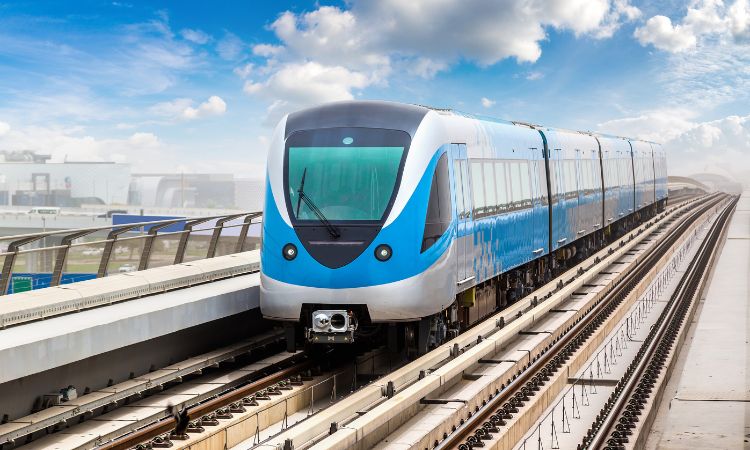
The global railway telematics market size reached approximately USD 6.64 billion in 2023. The market is further projected to grow at a CAGR of 8.00% between 2024 and 2032, reaching a value of USD 13.20 billion by 2032. This impressive growth highlights the critical role that telematics is playing in modernizing the railway industry. In this blog post, we will explore the various aspects of the railway telematics market, including its segmentation, regional trends, market dynamics, and competitive landscape.
Market Overview
Railway telematics refers to the integrated use of telecommunications and informatics to monitor and manage rail transport. This technology encompasses a wide range of applications that enhance safety, efficiency, and cost-effectiveness in railway operations. By leveraging real-time data, railway telematics systems improve decision-making, optimize resource utilization, and ensure the seamless movement of trains.
Market Segmentation
By Solution
- Fleet Management Fleet management solutions are pivotal in ensuring the optimal performance and maintenance of railway assets. These systems provide real-time monitoring and management of locomotives and wagons, facilitating efficient scheduling, route planning, and predictive maintenance. The primary goal is to enhance the operational efficiency of the rail fleet while minimizing downtime and maintenance costs.
- Collision Detection and Prevention Collision detection and prevention systems are crucial for ensuring passenger and cargo safety. These systems use advanced sensors and communication technologies to detect potential collisions and automatically initiate preventive actions. By reducing the risk of accidents, these solutions significantly contribute to the overall safety of railway operations.
- Railway Tracking and Tracing Railway tracking and tracing solutions provide real-time visibility into the location and status of trains. This information is essential for efficient logistics and supply chain management, allowing operators to monitor train movements, optimize routes, and improve delivery schedules. Enhanced tracking capabilities also lead to better customer service and satisfaction.
- Others In addition to the above solutions, the railway telematics market includes various other technologies such as automated ticketing systems, passenger information systems, and remote diagnostics. These solutions collectively contribute to the modernization and digital transformation of the railway industry.
By Mode of Operation
- Semi-Autonomous Semi-autonomous railway systems incorporate a combination of manual and automated operations. While human operators are still involved, many routine tasks are automated to improve efficiency and safety. These systems are currently more prevalent due to their relatively lower cost and easier integration with existing infrastructure.
- Fully Autonomous Fully autonomous railway systems represent the future of rail transport. These systems operate without human intervention, relying entirely on advanced telematics and artificial intelligence. Fully autonomous trains promise to revolutionize the industry by offering unprecedented levels of efficiency, safety, and cost savings. However, their adoption is currently limited by technological, regulatory, and infrastructure challenges.
By Train Type
- Passenger Train Passenger trains benefit significantly from telematics solutions designed to enhance safety, comfort, and convenience. Features such as automated passenger counting, real-time travel information, and emergency response systems are critical for improving the overall travel experience.
- Freight Train Freight trains utilize telematics for effective cargo management and logistics optimization. Real-time tracking of freight, automated loading and unloading systems, and predictive maintenance are some of the key applications that help streamline operations and reduce costs in freight transportation.
Regional Analysis
The railway telematics market is witnessing diverse trends across different regions:
- North America: The region is characterized by high investment in railway infrastructure and advanced technology adoption. The presence of key market players further drives growth.
- Europe: Europe is a leader in railway telematics, with extensive adoption of advanced systems driven by stringent safety regulations and a focus on sustainability.
- Asia Pacific: Rapid urbanization and the expansion of rail networks in countries like China and India are major growth drivers. The region shows immense potential for telematics adoption.
- Latin America: The market in Latin America is growing steadily, supported by investments in rail infrastructure and modernization initiatives.
- Middle East and Africa: The adoption of railway telematics in these regions is gradually increasing, driven by new rail projects and the need for improved logistics solutions.
Market Dynamics
Drivers
- Increasing Demand for Safety and Security: Enhanced safety features reduce the risk of accidents and improve overall security.
- Advancements in Technology: Continuous innovation in telematics and related technologies drives market growth.
- Growing Need for Efficient Rail Operations: Optimization of resources and reduction of operational costs are key factors pushing the adoption of telematics.
Restraints
- High Initial Investment Costs: The cost of implementing advanced telematics systems can be a barrier for many operators.
- Technical and Regulatory Challenges: Integration with existing systems and compliance with regulations pose significant challenges.
Opportunities
- Emerging Markets and Untapped Regions: There is substantial potential for growth in developing regions where rail networks are expanding.
- Innovations and New Product Developments: Continuous R&D offers opportunities for market players to introduce new solutions.
Challenges
- Integration with Existing Systems: Ensuring seamless integration with legacy systems is a major challenge.
- Data Privacy and Cybersecurity Concerns: Protecting sensitive data from cyber threats is crucial for the success of telematics solutions.
Competitive Landscape
The competitive landscape of the railway telematics market is marked by the presence of several key players:
- Siemens AG
- Hitachi Ltd.
- Alstom SA
- Thales Group
- Bosch Engineering
These companies are actively engaged in strategic initiatives such as mergers, acquisitions, and partnerships to strengthen their market position. They also focus on continuous innovation to offer advanced telematics solutions.
Future Market Forecast (2024-2032)
The global railway telematics market is expected to witness robust growth over the forecast period. Key trends driving this growth include advancements in autonomous rail systems, increasing investments in rail infrastructure, and the rising demand for efficient logistics solutions. The market’s future looks promising with opportunities for innovation and expansion in emerging regions.
